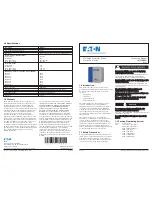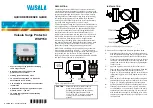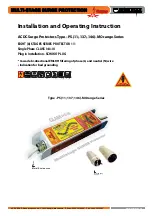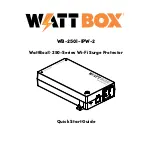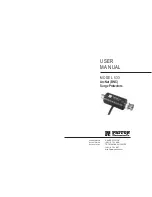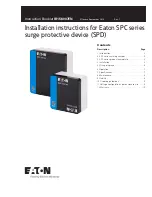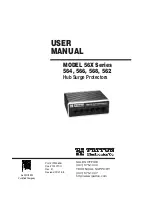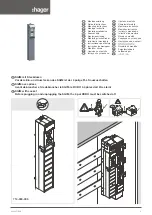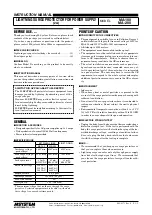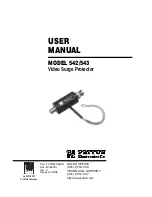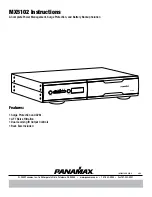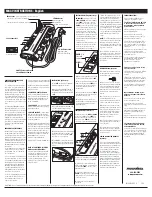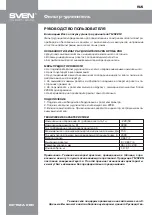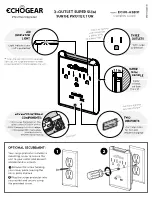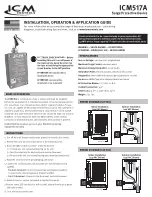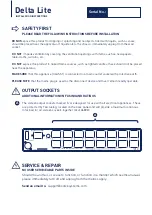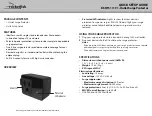
APPENDIX A
MODEL 546 AND 547 SPECIFICATIONS
Electrical: 546: CCITT/ITU V.35
547: CCITT/ITU V.35, DTE Orientation on
the LFH60 connector
Connectors: 546: 1 male M/34, 1 female M/34
547: 1 male M/34, 1 LFH60 male
Surge Capacity: 1500 Watts for 1msec, 400A (8/20 µS pulse)
Approvals: CE marked for EMS directive 89\336\EEC
(ESD.EFT) Compliant with IEC 801-5
(surge)
Clamp Voltage: +/- 19V/19V Differential in 500nS
Size: 3" x 1.7" x .8" (7.62 x 4.318 x 20.32 cm)
Model 546MF and Model 547MM
546 Lines Protected: 19 lines (B, C, D, E, F, H, L, M, N, P, R, S,
T, U, V, W, X, Y, AA)
547 Lines Protected: 18 lines (A, B, C, D, E, F, H, K, P, R, S, T, U,
V, W, X, Y, AA)
Protection: Common Mode Pin to Braid
Differential Line to Line
Model 546/34MF
Lines Protected: All 34 Lines
Protection: Common Mode Pin to Braid
Differential Line to Line
4.0 INSTALLATION
There are 4 steps to installing the Patton Models 546 and 547.
NOTE: Failure to follow these instructions could render the current
limiting feature inoperable. If you have any questions,
contact us at: (301) 975-1007; http://www.patton.com;
or, [email protected]. Read the relevant section(s)
of your manufacturer’s user manual before beginning any
work.
Model 546
1. Turn off power to your V.35 device and disconnect the power
cord(s) from the wall outlet(s).
2. Unplug the existing connection between the V.35 cable and
your equipment.
3. Install the Model 546 between your equipment and your cable.
4. Connect the metal ground strap to your equipment’s ground.
Model 547
1. Turn off power to the router (or other device) and the network
termination equipment and disconnect the power cord(s) from
the wall outlet(s).
2. Unplug any existing connection between the V.35 cable and
your equipment.
3. Plug the LFH60 to the router(or other device) and the V.35
(M/34) to the network termination equipment.
4. Connect the metal ground strap to the equipment’s ground.
3
4
WARNING!: The Model 546 and the Model 547 are
secondary devices, and are designed for inside use only.
Moreover, do not attempt to connect these surge protectors
during a lightning storm. Patton Electronics Company
accepts no liability for damage or injury associated with the
use of these products. The protected device should also have
an AC suppression device to prevent transients from entering
the system via the incoming AC power connection. (These
transients also can show up as failures on the
communication link.)





